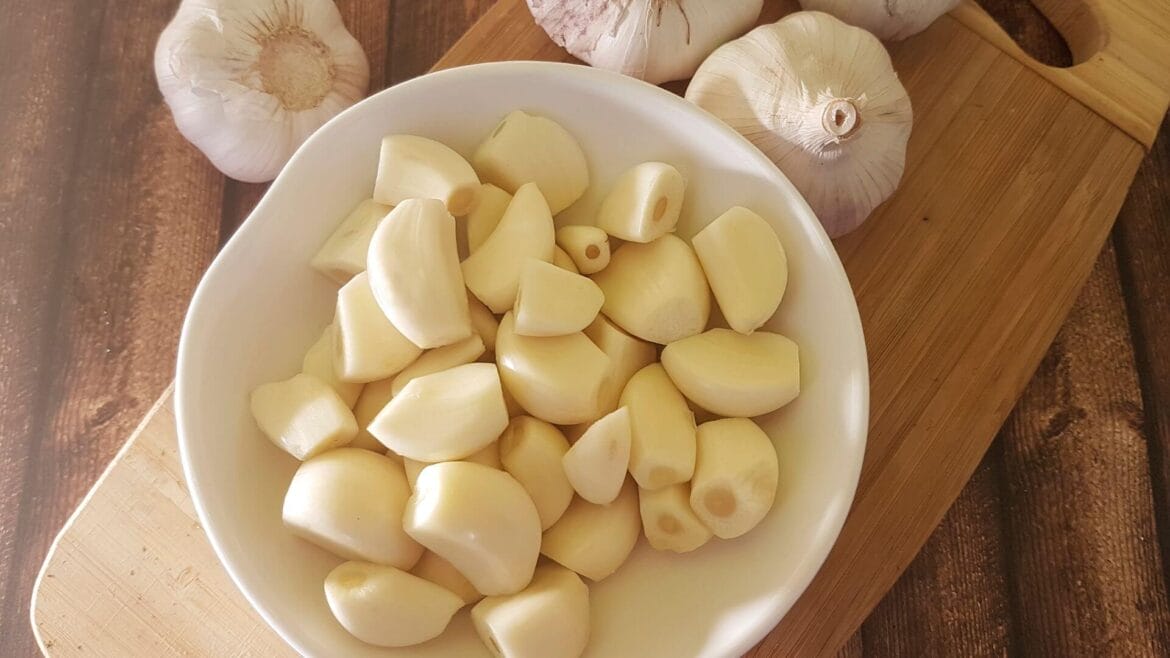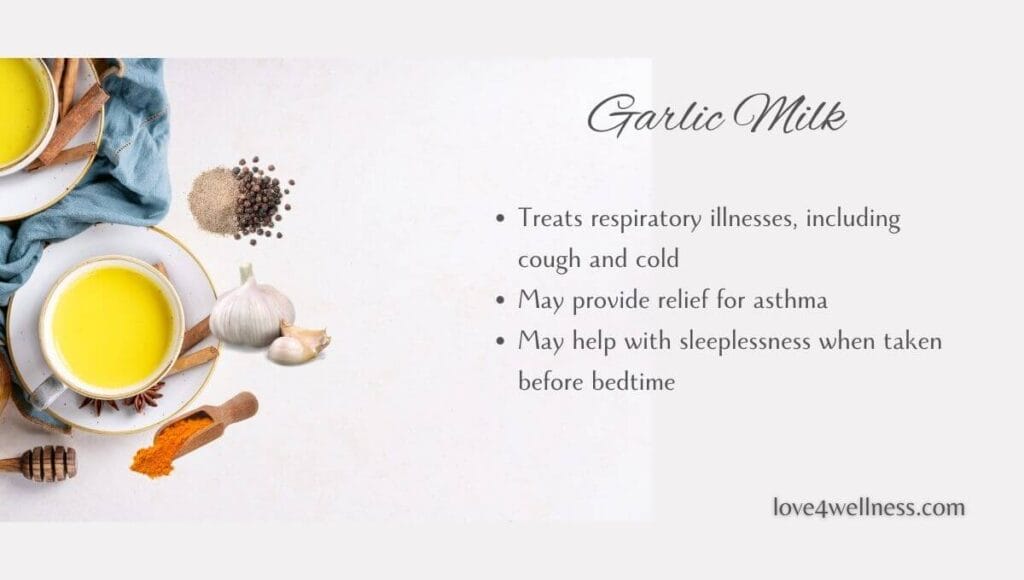In this article: A bit of history of the use of garlic in various civilisations, scientifically proven health benefits, traditional medicinal uses, ways to increase the beneficial compound allicin and maximise benefits, and a few healthful recipes.
Predictably, you may love garlic for its flavour and the magic it creates in your food. What may surprise you is the history of its use and the incredible medicinal and health benefits of garlic.
History has evidence that major civilisations, including Indians, Chinese, Egyptians, Romans, and Greeks, used garlic not only for its excellent culinary qualities but for therapeutic benefits as well. Further, ancient medicine systems of Ayurveda and TCM also used garlic for its medicinal benefits.
Also, even in the present times, most cuisines, including Indian, Chinese, Mediterranean, Italian, Mexican, Thai, etc., use garlic in dishes for enhanced flavour and taste. Amazingly, many remedies with garlic are not forgotten and are still being used by many people in various parts of the world!
Allicin, a compound produced in garlic when the enzyme Alliinase is activated, provides plenty of health benefits. This article provides a glimpse into the history of the use of garlic. Also, it explores the medicinal properties of garlic and the health benefits it offers, how to use garlic in food, tips to maximise the health benefits of garlic, and a few recipes.
About Garlic
Garlic, scientifically called Allium Sativum, belongs to a species of bulbous flowering plant in the genus Allium. Onion, shallot, leek, chive, welsh onion, and Chinese onion are its close cousins. While grown worldwide, most garlic production comes from China, India, Bangladesh, Egypt, and South Korea, in that order.
Vernacular names
- Bengali – Loshun
- Gujarati – Lasan
- Hindi – Lahsun
- Kannada – Bellulli
- Malayalam – Veluthulli
- Punjabi – Lasan
- Tamil – Poondu
- Telugu – Velluli
- Urdu – Lahsun
Bioactive compounds in garlic with medicinal properties
Scientists attribute various sulfur compounds in garlic to their health benefits. Some bioactive compounds in garlic are Allicin, Alliin diallyl sulfide, diallyl disulfide, diallyl trisulfide, S-allyl-cysteine, and Ajoene.
Among these, Allicin is the most important in garlic, offering various health benefits. Garlic does not have it as such. When garlic is crushed and chopped, an enzyme called Alliinase is activated, which produces Allicin.
Allicin is easy to destroy by heat; hence, you may not get the intended amounts when you use garlic in cooking. But there are ways to maximise the benefits by improving the quantity of Allicin produced. Keep reading on to learn tips on how to retain Allicin.
Garlic’s use in ancient civilisations and traditional medicine systems
Some historians believe garlic originated from China, while some believe Sumerians brought it to China, which later spread to other parts of Asia and the rest of the world.
Nevertheless, traditional medicine systems like Ayurveda and TCM use garlic remedies to treat various ailments.
Ayurveda refers to garlic as Rasona. Ayurvedic texts laud garlic as a longevity and anti-ageing spice. Besides, garlic has other therapeutic uses in Ayurveda.
In ancient India, garlic was used to:
- Revive normal appetite
- Treat common cold and cough
- Cure skin disease
- Treat rheumatism
- Manage sciatica and low back pain
- Treat haemorrhoids
- Reduce bone loss
- Improve hair growth
- As an aphrodisiac to increase sex libido
Also, many Indian households encourage new mothers to include garlic as it is believed garlic can increase breastmilk production.
Garlic has a significant place in Chinese medicine. Ancient Chinese doctors placed garlic in Yang due to its heating and stimulating properties and used it as a remedy for colds, coughs, infections, digestive issues, and to treat depression.
Garlic was extensively used in other parts of the world too.
Ancient Egyptians also used garlic in several remedies. It is believed the Egyptians fed their slaves to be physically strong and capable of doing more work. Interestingly, garlic bulbs were found in the pyramids of Tutankhamun, the youngest pharaoh of Egypt. Such is the importance of the power of garlic among Egyptians.
Evidence says ancient Greeks fed their army with garlic before a major war, and Greek Olympic athletes ate garlic for a good performance. Hippocrates recommended garlic as a remedy against intestinal parasites, as a laxative and also as a diuretic. Physician Dioscorides mentioned garlic as a colic remedy. He also suggested it to regulate menstrual cycles and as a remedy against snakebites and mad dog bites.
Similarly, several physicians from Rome used garlic as a remedy for fever, tuberculosis, stomach ailments, colic, snake bites and as an aphrodisiac. In fact, Pliny the Elder, a Roman physician from the first century, considered garlic a universal remedy.
Garlic is famously called Russian Penicillin as Russian doctors used it to treat respiratory diseases, and in much recent history, Louis Pasteur, in the year 1858, wrote that garlic killed bacteria.
Such is the incredible history of garlic’s use in various parts of the world. In the contemporary world, scientists have studied garlic and approved it for many health benefits.
Scientifically proven health benefits of garlic
Notable benefits of consuming garlic include:
- Reduce estrogen deficiency in women, hence useful for menopausal women to prevent bone loss
- Lowers blood cholesterol and LDL (bad cholesterol)
- Maintains blood pressure at optimal level
- Prevents and treats respiratory infections, including common cold
- Enhances immunity and protects from infections, such as fungal and other microbial infections
- Regulates blood sugar levels
- Reduces inflammation
- Blocks free radicals, which may harm the cells and tissues in the body
- May protect from cancer
- Improves hair growth and reduces hair fall
Allicin, the reason behind the many health benefits of garlic, is volatile!
Garlic cloves contain a chemical called Alliin. When the clove is crushed, the enzyme Alliinase converts Alliin to Allicin. For maximum amounts of Allicin to be produced, you must wait 10 minutes after crushing the cloves.
So, garlic has to be crushed if you want to get its health benefits. And wait for 10 minutes before consuming to reap the maximum benefits.
Also, since high temperatures can destroy Allicin, it is best to cook it for a short time if not consumed raw.
In summary, the following are ways to maximise the health benefits of garlic:
- 10-minute rule: Peel garlic cloves, crush and chop into small pieces. Leave it for 10 minutes for maximum release of allicin.
- Avoid heating at high temperatures: High flame may destroy the compound, so add garlic when the dish is almost done and is not on high flame.
Some useful tips on consuming garlic for good health
- Taking one to two cloves of garlic daily is considered safe and healthy.
- Peel and crush the cloves. Set it aside for 10 minutes before adding to a dish.
- Add crushed and chopped garlic at the end of cooking to maximise health benefits.
- Even healthier is to add them raw to dressings, salads, soups, etc.
- Eating raw garlic cloves may cause bad breath and heartburn. It may also cause diarrhoea in some. They can saute chopped cloves on low flame and consume them to avoid the side effects of raw garlic.
Remedy recipes with garlic
#1 Garlic milk
Ayurveda practitioners recommend garlic milk to reduce low back and sciatica pain and relieve recurrent fevers and digestive issues like bloating and constipation. In addition, garlic milk may help treat respiratory illnesses, such as cough, cold, and asthma. Are you suffering from sleeplessness? Garlic milk before bed can hugely help. And this is safe to consume for both kids and adults.
Method:
Crush two garlic cloves and rest them for 10 minutes for Allicin to build. Meanwhile, boil a cup of milk. Add the crushed cloves and heat the mixture for a couple of minutes on low flame. Add a pinch of pepper powder and turmeric powder. Mix well and switch off the flame. Allow the mixture to rest for a while. Sip it warm.
#2 Garlic rasam
Got a nasty cold? Garlic rasam can do wonders!
This is a common dish in South Indian households and absolutely a regular if the family has children. The ingredients include pepper, turmeric, and garlic, and yes, you have guessed right – it is the perfect recipe to combat colds. Not only colds, garlic rasam can provide instant relief to a blocked nose, sore throats, coughs, and sleeplessness.
What you need:
- Tamarind – a small lemon size
- One small tomato
- Mustard seeds – 1/2 teaspoonful
- Red chilli – 1
- Pepper – One tablespoonful
- Cumin seeds – One teaspoonful
- Garlic cloves – 8 (if cloves are big) or 12 (if cloves are small)
- Turmeric powder – 1/2 teaspoon
- Salt to taste
- A twig of curry leaves
- Coriander leaves to garnish
Method:
Soak tamarind in water for about 30 minutes. Strain the liquid and discard the pulp. Add pepper, cumin seeds, and garlic to a mixer and pulse it to a coarse mixture.
Heat a pan, and on low flame, add a spoonful of oil/ghee, add mustard seeds, and allow them to splutter. Break red chilli into two, and add them to the pan. Add curry leaves, tamarind water, chopped tomato, turmeric powder, salt, and water as needed.
Boil the mixture on a medium flame for about 8 to 10 minutes. Then, add the ground mixture containing pepper, cumin, and garlic. Bring this to a boil and switch off the flame. DO NOT boil more after adding the garlic-pepper mixture.
Pro tip:
Take two garlic cloves, wash them well, and DO NOT peel the skin. Smash the cloves with the head of your knife just so that they break. Keep them aside. Add these garlic cloves too along with the ground garlic-pepper mixture. These cloves with the skin enhance the flavour of rasam incredibly.
Garnish with coriander leaves. Sip it either hot or warm, as per your preference.
You may take two to three cups of rasam a day with a gap of 3 hours window between each cup without any problem. Also, for toddlers and young children, rasam can be added to softly-cooked rice and fed along with vegetables.
Garlic cloves to lower cholesterol and manage blood sugar
Many diagnosed with slightly abnormal blood pressure or blood sugar look for natural remedies before starting with medications.
Such people can start with one clove of garlic a day. If there are no discomforts, they may increase it to two cloves a day.
Chewing it raw can be unpleasant. Instead, you can peel the skin, crush and chop it into small pieces. After 10 minutes, saute them on a low flame with a few drops of olive oil and then eat them.
Takeaway
Garlic is a must-have spice and a must-add ingredient on a regular basis. Consuming raw garlic is the most healthful option; however, due to its unpleasant taste and flavour, garlic is generally minced and added to dishes. To maximise the health benefits, crush garlic and allow it to rest for ten minutes before use. This allows for maximum Allicin to build, thus maximising the health benefits of garlic. Further, if you wish to take supplements, it is necessary to take your doctor’s advice for the correct dosage.
Images: canva.com


